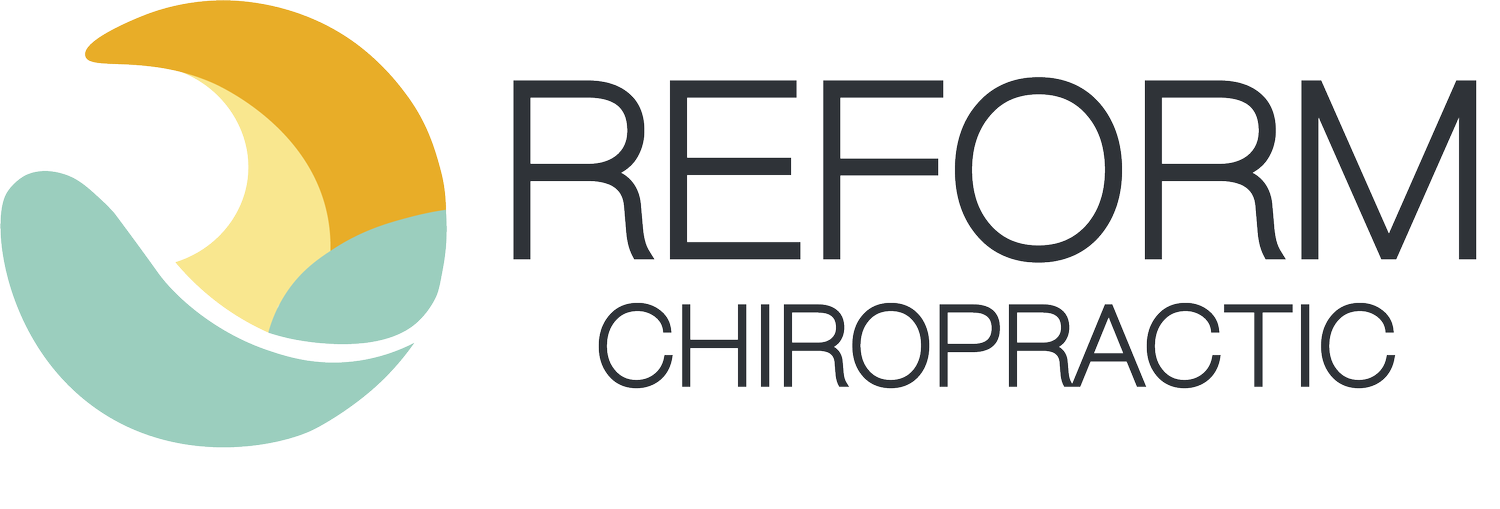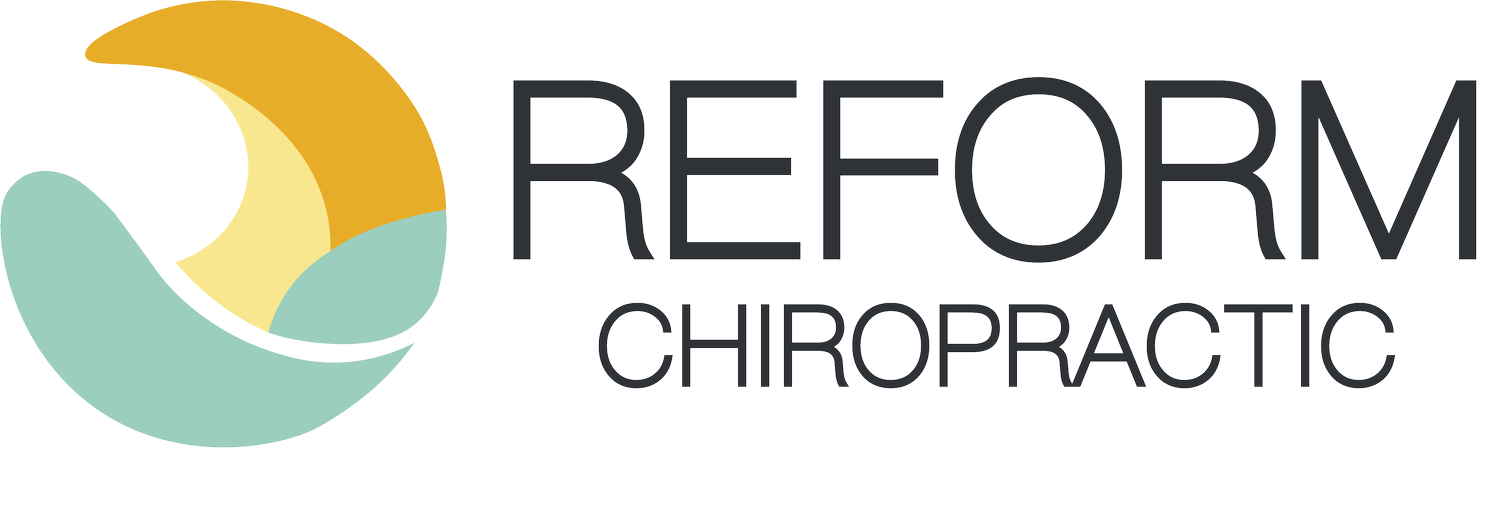5 ways chiropractic Care May help you
Welcome to the very first blog of Reform Chiropractic! We are glad you are here. Today we are discussing 5 ways chiropractic care may benefit you. Most individuals seek chiropractic care when they are experiencing pain. Often times pain is the final symptom to manifest when there is dysfunction in the body and the first to go away when addressing dysfunction. Although there is some evidence that chiropractic may benefit you even if you are not in pain, today we are mostly discussing how chiropractic may be part of the answer to helping you to reduce pain and improve function to live a higher quality of life.
Neck, mid-back, & low back pain
Let’s start with the more obvious ones! It is common for individuals to seek chiropractic care when feeling pain and stiffness throughout the spine. If you have experienced back or neck pain, you understand how frustrating it can be when pain begins to limit your daily life. It can alter the way you participate in the activities you love such as playing with your kids or grandkids, going out for a round of golf with your buddies, spending time in the kitchen cooking your favorite recipes, or hitting the gym for your favorite workout class. Low back pain is the leading cause for disability worldwide according to the World Health Organization. Conservative management with education, reassurance, and minimally invasive techniques has been proven to be an effective treatment for those suffering neck, mid-back and low back. Let’s explore other ways chiropractic care may benefit you!
Headaches
Headaches are common, but they are not normal. Like neck and back pain, symptoms caused by headaches can be debilitating. There are a multitude of factors that may trigger those pesky headaches that showing up, but most of the time there is a link to the cervical (neck) region of the spine even if you are not particularly experiencing neck pain. If you have tried altering your diet and medication among other changes to your lifestyle habits and still have not had relief from headaches it may be time to check out your neck. Chiropractic adjustments, soft tissue therapy, and movement therapy may help to reduce the frequency and intensity of your headaches and help you prevent them in the future. (1)
Extremity pain (shoulder, elbow, hip, knee, etc.)
Chiropractors can treat other common conditions outside of the spine, such as shoulder or knee pain. Often after an assessment it is found that some extremity pain may actually be originating from the spine. It may seem a little odd for a chiropractor to check out your low back when you are sure the pain is coming from your knee. It is amazing how intricately connected the human body is. The EXPOSS study (2) showed that over 70% of participants hip pain actually came from the low back and nearly 50% of shoulder pain came from the neck. Over 40% of all extremity pain was shown to come from the spine. Because of what the science says, we would be doing you a disservice by not checking out your spine as a possible source for your pain. Even if the spine is ruled out as a contributing factor, we still have the tools to address the joint in question with non-invasive treatments. Our ultimate goal is to uncover where the real problem lies so that we can address it head on, rather it be the spine or the joint itself.
Vertigo
Vertigo is not a condition, rather it is a symptom of another condition. It is the sensation that you or the environment around you is moving or spinning. These “dizzy-spells” can be very subtle or so severe that you cannot sit upright. This feeling of unsteadiness can be accompanied by ringing in the ears, transient hearing loss, and/or feeling nauseated in some cases. Central vertigo indicates a serious pathology, however peripheral vertigo is due to a benign process and accounts for 80% of vertigo cases. Peripheral vertigo can often be treated with specific exercises and movements of the head performed by a trained professional such as a chiropractor. There are multiple case studies such as the one linked (3) that show reduction in symptoms with chiropractic management.
TMD
Temporomandibular joint disorders can cause pain and popping of the jaw with chewing, talking, yawning, etc. This pain and dysfunction may be the result of a disorder of the joint itself or of the muscles that control the movement of the joint. A lot of times it is unclear what caused the symptoms to begin. The goal with manual therapy is to restore normal movement and function of the joint and reduce pain.
Today we just barely scratched the surface on the few ways that chiropractor care may benefit you or those close to you. There are a multitude of factors that play into an individual’s pain experience. Working together with a chiropractor may help you to identify those triggers and find ways to make sense of your pain and manage it. You are not broken, and healing is possible for you!
Be well,
Dr. K
1. Bryans, R., Descarreaux, M., Duranleau, M., Marcoux, H., Potter, B., Ruegg, R., Shaw, L., Watkin, R., & White, E. (2011). Evidence-based guidelines for the chiropractic treatment of adults with headache. Journal of manipulative and physiological therapeutics, 34(5), 274–289. https://doi.org/10.1016/j.jmpt.2011.04.008
2. Rosedale, R., Rastogi, R., Kidd, J., Lynch, G., Supp, G., & Robbins, S. M. (2020). A study exploring the prevalence of Extremity Pain of Spinal Source (EXPOSS). The Journal of manual & manipulative therapy, 28(4), 222–230. https://doi.org/10.1080/10669817.2019.1661706
3. Sajko, S. S., Stuber, K., & Welsh, T. N. (2013). Chiropractic management of benign paroxysmal positional vertigo using the Epley maneuver: a case series. Journal of manipulative and physiological therapeutics, 36(2), 119–126. https://doi.org/10.1016/j.jmpt.2012.12.011Injuries/trauma

